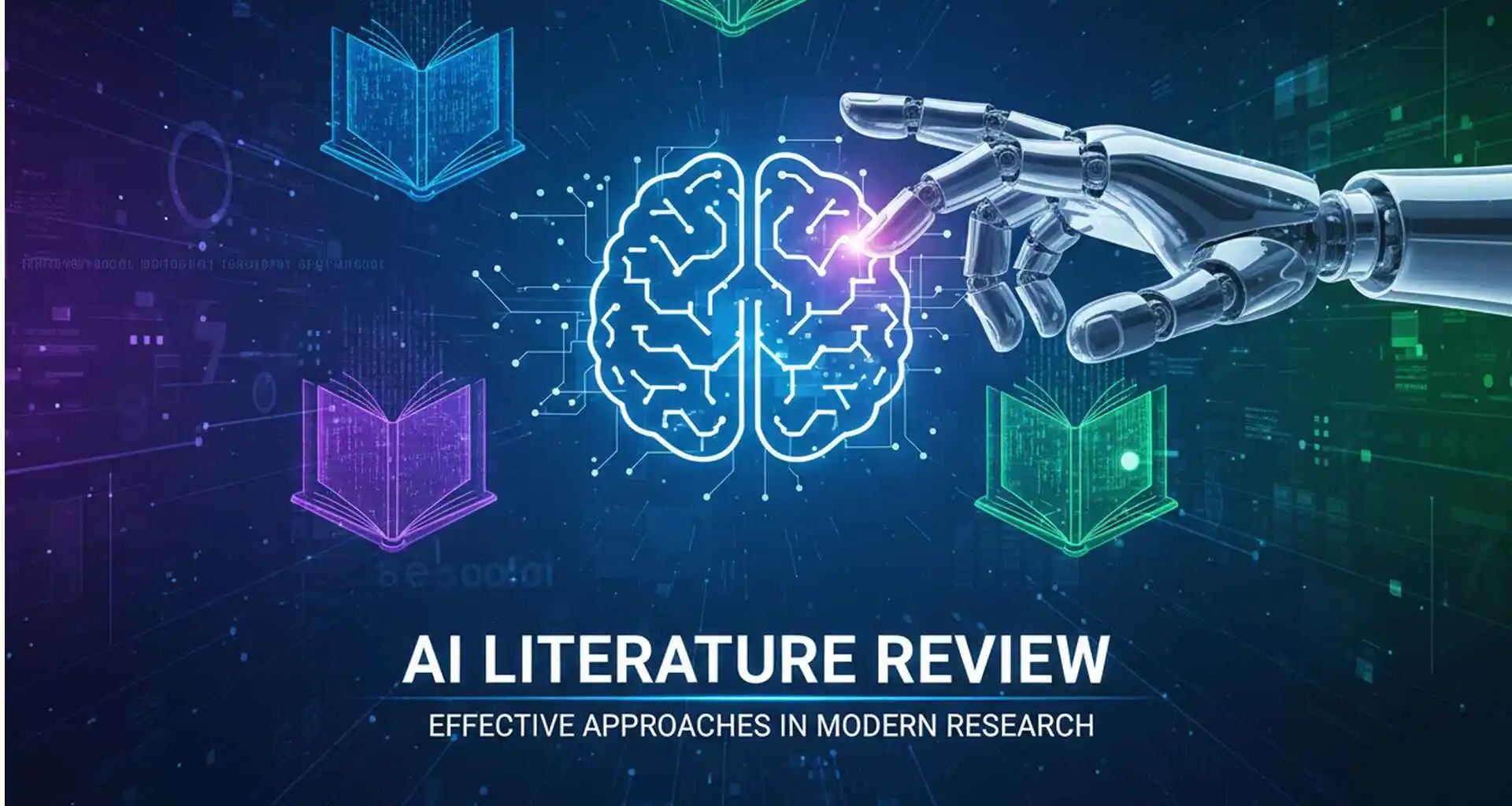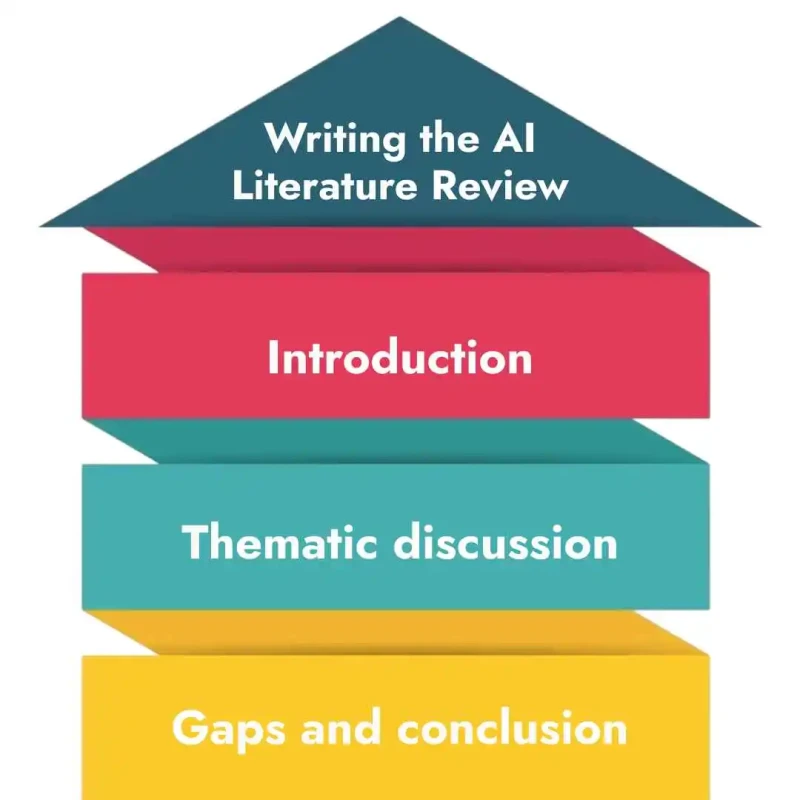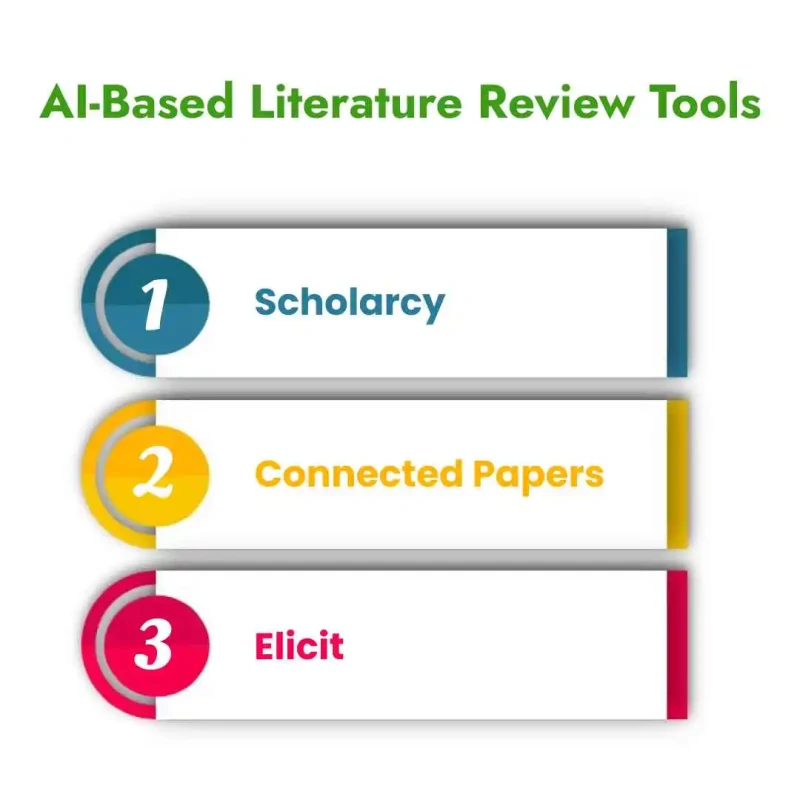
Katy Richards
An AI Literature Review is a significant contributor in encouraging modern research by providing a critical overview of previous work, identifying areas of research gaps, and paving the way for innovative discoveries. A literature review in modern AI research basically involves gathering, comparing, and integrating earlier studies related to artificial intelligence systems, algorithms, and deployment.
Unlike conventional reviews, an AI-centric literature review takes more than a paraphrasing of papers—it needs the combination of perspectives from computer science, statistics, data engineering, and ethics. In this blog, you get a deep knowledge of a properly organised AI literature review and how it enables researchers to place their work in context, enhancing credibility within ongoing scholarly advancements in artificial intelligence.
Defining the scope of your AI Literature Review is the first significant step. AI encompasses a number of its own subfields, such as machine learning (ML), natural language processing (NLP), computer vision, robotics, and deep learning algorithms.
Researchers must decide what areas are most relevant to their study and set clear boundaries to prevent scope creep having the urge to address too many unrelated issues. Studying the current trends in AI, such as generative models, explainable AI, and reinforcement learning, allows you to focus on current and relevant research areas.
Good sources are integral to a good AI Literature Review. Reliable databases are:
IEEE Xplore, SpringerLink, Scopus, and the ACM Digital Library – for peer-reviewed journal articles.
Preprint repositories like arXiv and SSRN – for early access to emerging research.
AI-specific journals and conferences like NeurIPS, ICML, and CVPR – where announcements about new AI breakthroughs are made.
Always use peer-reviewed sources as compared to non-reviewed sources to check research validity and maintain academic rigour.
To conduct a robust AI Literature Review, scholars must employ enhanced search techniques:
Choose strong search keywords and terms to ensure maximum search accuracy.
Apply Boolean operators (AND, OR, NOT) and filters to narrow down search findings.
Utilise citation tracking and reference mining to follow influential research.
Utilise AI-facilitated search tools that examine citation networks, conserving precious time during screening.
Strategic searching not just improves efficiency but also gives a comprehensive view of the field of AI research.
Organisation is very important while working on large research materials. Applications such as Mendeley and EndNote help in managing references and citations in an organised way.
Constructing thematic clusters, grouping studies by methods, applications, or theoretical frameworks, allows researchers to map research progress visually. Research matrices or concept maps can also help identify areas of gaps and overlaps in AI research so that your study completes unfulfilled or inadequately developed areas.
A vigorous AI Literature Review demands critical evaluation. Note:
Evaluating methodology: Examine dataset quality, algorithm suitability, and validation procedures.
Evaluating reproducibility: Verify whether results are reproducible through the data and code at hand.
Identifying biases: Search for data set limitations, fairness, and ethics.
Evaluating impact and relevance: Verify citation count, ranking of journals, and impact on AI research.
Critical assessment distinguishes between a review that merely summarises and one that actually synthesises
Having collected and evaluated research, synthesis weaves all the elements together into a cohesive narrative.
Apply comparative analysis to contrast methodologies, algorithms, and datasets. Establish trends, challenges, and new opportunities in AI research. Consider developing a conceptual framework for charting how different studies relate to each other and where new studies can contribute value.
An AI Literature Review briefly synthesised doesn't merely summarise previous work, it interprets in a way to create new insights.

A successful AI literature review links your study to existing research, identifies trends, and indicates areas with gaps in knowledge. It must be logically structured, tight, and readable to technical and non-technical communities.
Start by explaining why the topic matters, what it does, and how it is relevant to your area of study.
Example
This is a research report on XAI innovation focusing on improving model transparency and trust among end-users.
Summarise the introduction to state your purpose of research, limitations of research, and the generalizability to the broader AI community.
Organise the report on findings in a thematic rather than a chronological structure. This is a traceable and informative discussion.
|
Theme |
Focus Area |
Examples |
|
Algorithmic Innovations |
AI model innovations |
Deep learning, reinforcement learning |
|
Applications |
Practical implementations |
AI in healthcare, education |
|
Ethics & Society |
Human impact and responsibility |
Bias, privacy, fairness |
Use topic sentences to introduce paragraphs and images (tables, graphs, or concept maps) for technical comparison or tracking trends.
End up your review by pointing to what is still to be said and how upcoming research might complete the gaps.
"Despite rapid AI progress, there are still few models of ethical deployment, and we will need dialogue between policymakers and computer scientists."
Highlight what new directions or challenges your review offers.
A good citation is a significant feature of authentic academic work. It permits your writing to respect intellectual property and lets readers trace original ideas and facts. Always use an accepted format of citation, such as APA, MLA, or IEEE, depending on discipline and publishing norms.
Dissertation or research writers typically guide students in being precise with references by:
Keeping in-text citations and lists of references consistently formatted.
Paraphrasing ideas properly without altering the meaning of the initial statement.
Referencing all data, statistics, and verbatim quotes that have been gathered from past research.
Authenticating all sources for accuracy and relevance to avoid disinformation.
Use credible citation management software like Zotero, Mendeley, or EndNote to organize references and generate citations automatically. These are time-saving and reduce errors in format.
Prior to submission, run a plagiarism scan through services such as Turnitin or iThenticate to ensure your work is original and in line with institutional requirements regarding integrity. Transparency and citing correct references increase your reputation as an honest and credible researcher.
Technology today has fast-tracked performing an AI Literature Review to be faster, smarter, and more accurate. Many AI-driven tools today support researchers in browsing, organising, and mapping vast pools of scholarly material with relative ease. Here is how you can make use of them:

Scholarcy – Summarises scholarly papers automatically, extracting important takeaways, methodologies, and findings to shorten initial screening time.
Connected Papers – Allows you to visualise how studies relate, identify core works, and find affiliated clusters of related research.
Elicit – Uses natural language processing to assist in question-based searching for literature and auto-synthesis of research results.
Most important advantage: These tools automate your AI Literature Review process by reducing manual work and surfacing the most pertinent studies.
Text mining methods examine large collections of data to discover patterns, common terms, and trends in topics. NLP tools pull contextual meaning out of research abstracts, making it simpler to discover trending topics in AI research.
Chief benefit: They convert unstructured academic data into meaningful information that steers the direction of your review.
Computer programs such as VOSviewer, CiteSpace, and Bibliometrix produce interactive visual maps of scholarly communities, citation networks, and author co-authorship. Visualisation helps researchers detect research voids, breaking issues, and influential papers within the AI fields.
Key benefit: Visualisation renders difficult information clear and understandable, so researchers can visualise how different AI subdomains are connected and evolve.
Even seasoned scholars can make mistakes during an AI Literature Review. Some of the most frequent mistakes are:
Missing out on current AI trends due to outdated sources.
Literature choice bias towards trendy topics or authors.
Failing to account for reproducibility and dataset accessibility while evaluating papers.
To avoid these traps, always apply a systematic, objective approach and cite authorities who are experts in AI research writing and reviewing. It’s wise to consult professionals who specialise in AI literature reviews to ensure accuracy, credibility, and publication readiness.
The future of AI research lies in automation and collaboration. For age:
Systematic reviews aided by AI which prepare summaries independently.
Machine learning algorithm-based predictive literature trend analysis.
Open science and collaborative AI platforms facilitate global research openness.
These developments will make future AI Literature Reviews more comprehensive, data-driven, and globally accessible.
Producing an impactful AI Literature Review involves understanding research scope, applying smart search strategies, and leveraging modern AI tools. Continuous learning and staying updated with AI’s fast-evolving landscape are essential for scholarly success.
For personalised guidance and a more successful publication, take the opportunity to seek expert research assistance from experienced research professionals like us. We offer tailored guidance on structuring, organising, and writing your literature review to meet the highest academic standards.